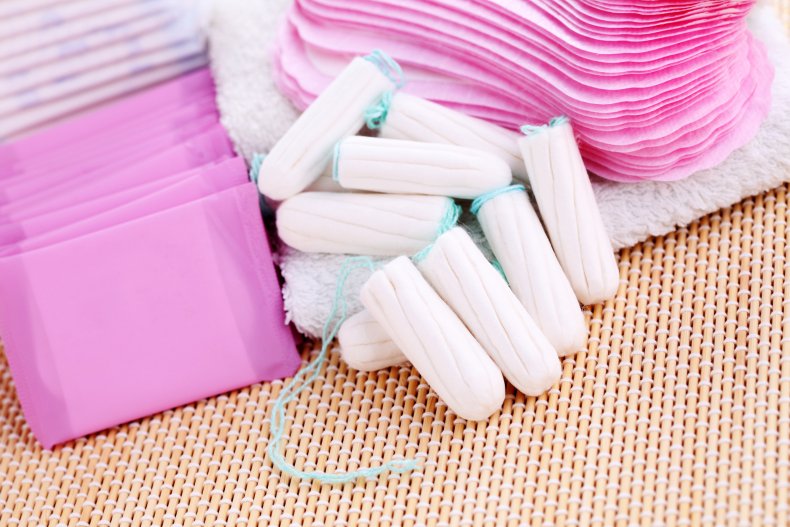Blood
Period product absorbency test uses blood for the first time
Menstrual hygiene products like tampons and pads have now been compared by using blood during testing for the first time.
A study published in the journal BMJ Sexual & Reproductive Health on August 7 is the first to compare the absorption of period products using human blood, finding that diaphragm-shaped menstrual discs may be better than pads or tampons at absorbing menstrual flow.
Manufacturers of period products have previously used saline or water to measure how absorbent they are. Menstrual blood, however, is much thicker than water, and contains endometrial tissue, mucus and other secretions, and is therefore absorbed at a different rate, according to the paper.
“No study exists comparing the capacity of currently available menstrual hygiene products using blood,” the study’s authors wrote. “Utilizing actual menstrual blood to test the collection capacity of menstrual hygiene products would be challenging, but blood products are a closer approximation than water or saline.”
ISTOCK / GETTY IMAGES PLUS
Instead of actual menstrual secretions, which are hard to obtain for testing purposes, the researchers used packed red blood cells, which are blood after plasma and platelets are removed.
A post explaining that this was the first study to use real blood to compare period products went viral on X, formerly Twitter.
Alana Auston posted a screenshot from a TikTok video on X that said: “Me explaining to people that the first study where scientists actually tested the absorbancy of period products using BLOOD and not water was only published on Monday this week — and unsurprisingly it’s shown that products aren’t as absorbent as their labels say.”
um? I assumed those commercials used water because they couldn’t show blood but it’s really because no one…thought to test actual blood? pic.twitter.com/Clq3u0roW8
— alana 🦋 (@alanaauston) August 14, 2023
Auston captioned the post: “um? I assumed those commercials used water because they couldn’t show blood but it’s really because no one…thought to test actual blood?” The post garnered over 100,000 likes.
Another user, @oldenoughtosay, replied to the post, saying “I am just gonna need to go sit down in a dark corner and be quiet for a minute. They haven’t been testing period products with *blood*, let alone actual endometrial tissue.”

ISTOCK / GETTY IMAGES PLUS
“It is a historical paradox that these products changed the way people menstruated, but were not based on actual materials (blood, tissue),” Camilla Mørk Røstvik, a researcher into the history of menstruation in art and advertising at the University of Aberdeen, told Newsweek.
“For historical context on why blue saline was used (first in testing, then in advertising—as a hangover from the testing, but also due to censorship and audience willingness to see blood), Professor Sharra Vostral’s book Toxic Shock: A Social History is very good,” Røstvik said. “In it, she shows how feminist scientists like Nancy Reame tried to invent new blood-testing equipment, but that it just couldn’t scale up for practical and social reasons.
“TSS (toxic shock syndrome) did indeed complicate matters, but there is also a story here about squeamishness around blood and gender, and the lack of resources and interest in developing new menstrual technologies.”

ISTOCK / GETTY IMAGES PLUS
“To be fair, sourcing menstrual blood for this industry would have been difficult. But it is astonishing to realize that this very commonplace commercial product lacked the testing infrastructure that we expect,” Røstvik explained.
“It is welcome and hardly surprising that people are upset about this. I am glad to see the interest because it is a fact that historians of menstruation, the Society for Menstrual Cycle Research, and other experts have tried to communicate for decades.”
The paper itself found that menstrual discs are the most absorbent of the 21 menstrual hygiene products tested, with one brand named Ziggy holding up to 80 milliliters of blood. Tampons, pads and menstrual cups all held between 20 and 50 milliliters, while absorbent pants held only 2 milliliters on average.
“In summary, this study found considerable variability in RBC (red blood cell) volume contained by menstrual products, with menstrual discs containing on average the most blood and menstrual underwear holding the least, with tampons, pads, and menstrual cups holding similar amounts,” the authors wrote.
“This emphasizes the importance of asking individuals about the type of menstrual products they use and how they use them in order to assess menstrual blood loss better and identify those with HMB (heavy menstrual bleeding). Further understanding of capacity of newer menstrual products can help clinicians better quantify menstrual blood loss, offer diagnostic testing, and accurately treat HMB.”
Do you have a tip on a science story that Newsweek should be covering? Do you have a question about period products? Let us know via [email protected].

